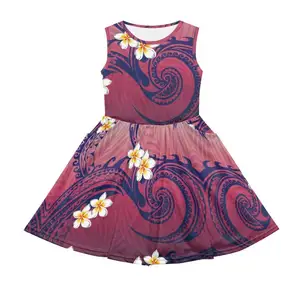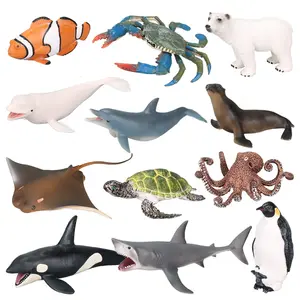





CHERY Tiggo 5x 20231.5Lラグジュアリーモードシート安価なガソリン車中国カメラ電気ライトレザー多機能自動
JP¥1,167,657 - JP¥1,325,065
最小注文: 2 ピース







電子自動車zeekr001新エネルギー車zeekr001you2022電動セダン車zeekr001デュアルモーターweバージョンロシア販売
JP¥3,289,158 - JP¥4,332,685
最小注文: 1 単位






Lixiang L7 Air Pro Maxバージョン在庫あり高速配信ハイブリッド車両長距離クルージング距離新エネルギー自動車
JP¥6,453,749 - JP¥7,083,383
最小注文: 1 単位






ロシアのホットセールBydDolphin小型電気自動車301km405kmバージョン範囲電気自動車成人用自動車純粋なEV原付
JP¥2,030,570 - JP¥2,408,351
最小注文: 1 ピース






Geely2024年Zeekr001電気自動車YOUフルエディション4WZeekr001新車価格Zeekr 001 EV YOU ME WEバージョンロシア用
JP¥5,383,371 - JP¥5,509,298
最小注文: 1 ピース






2024 2023長安UNI-K 2.0TロシアホットセールAWD /4WDフルコンプリートトップバージョン電気燃料バージョン
JP¥1,574,085 - JP¥2,502,796
最小注文: 1 ピース












2023 Zeekr New Energy Vehicles Electric Suv Zeekr 001 You Z-Sport MEWEバージョン2023ロシアへの輸出用低価格
JP¥4,319,290 - JP¥6,240,933
最小注文: 1 セット





BYD2024新しいBYD SONGLフルバージョン662KMCIFTASHKENT UZBEKISTAN KHAZAKISTAN TURKMANISTAN RUSSIA在庫あり
JP¥4,153,696 - JP¥4,274,901
最小注文: 1 ピース












ロシア売れ筋ChanganUni-v 2.0T AWDフルコンプリート燃料バージョン新品中古ChanganUni v t k 4WDガソリン車販売
JP¥2,284,313 - JP¥2,448,962
最小注文: 1 セット






2023真新しいLixiang L7 Max Pro AirバージョンハイブリッドSUV車輸出用新エネルギー電気自動車ロシアカザフスタンキルギスタン
JP¥7,177,828 - JP¥7,256,532
最小注文: 1 ピース






2024新車Lixiang L7 Max Pro AirバージョンSUV車Lixiang L7電気自動車新エネルギー電気自動車輸出用
JP¥6,357,730 - JP¥6,672,547
最小注文: 1 ピース












LI XIANG L6 LI ONE 2024ロシア市場向けに中国製の最新バージョンの新しいエネルギー車家族向けの安い価格の拡張車
JP¥3,462,987 - JP¥3,935,213
最小注文: 1 ピース






2023 HiphiZラグジュアリー4シートエディションハッチバックレーシングカー4wdセダン高速長距離EVカーHiphiXZロシア人気車
JP¥15,547,081
最小注文: 1 ピース
1個あたりの配送: JP¥82,149












ロシアホットセールChanganHua-wei Avatar 12 2023 650 700 km 3レーザー4wdEVセダンアバター12電気自動車
JP¥4,092,621 - JP¥4,690,774
最小注文: 2 ピース






キルギスタンロシアアラブ首長国連邦2023 2024 2.0t 4wd awd 2.0高エンジン自動オタクモンジャロxingyue l 2.0tガソリン350t
JP¥3,937,598 - JP¥4,381,203
最小注文: 1 セット






2024真新しいLixiang L7 Max Pro Air Version HybridSuv Car輸出用新エネルギー電気自動車ロシアカザフスタンキルギスタン
JP¥6,765,575 - JP¥7,190,421
最小注文: 1 セット












Zeekr 0072024新車輸出ロシアKAZUZB新エネルギー車自動車100KWh770km長距離電気自動車geekryzeekrev車
JP¥6,280,600 - JP¥6,518,916
最小注文: 1 セット






ロシアホットセールChanganHua-wei Avatar 12 2023 650 700 km 3レーザー4wdEVセダンアバター12電気自動車
JP¥2,046,311 - JP¥3,620,396
最小注文: 4 ピース






ホット販売chang an uni-kモデルchang an uni-k 20231.5t専用燃料バージョン新しいロシアchangan univ5席2wd4wd車主導
JP¥2,360,971 - JP¥2,675,788
最小注文: 1 ピース












Huanyu auto2023真新しいLixiang L7 Max Pro AirバージョンハイブリッドSUBLixiang L7輸出用ロシアカザフスタンキルギスタン
JP¥6,961,864 - JP¥8,221,132
最小注文: 1 単位






ロシアホットセールChanganHua-wei Avatar 12 2023 650 700 km 3レーザー4wdEVセダンアバター12電気自動車
JP¥5,115,903 - JP¥5,682,573
最小注文: 1 ハロン












中古車Geely2021モンジャロトゥゲラ2.0TD自動AWD4WDフラッグシップFWD2WD XINGYUESUV自動車ロシア語バージョンデポジット
JP¥2,864,835 - JP¥2,990,605
最小注文: 1 セット






2023新車Lixiang L7 Max Pro Air Version HybridSuv車新エネルギー電気自動車輸出ロシアカザフスタンキルギスタン
JP¥6,563,935 - JP¥6,611,157
最小注文: 1 セット
ロシア語版について
あなたの子供、姪または甥のための完璧なかわいい仲間を探しているなら、Alibaba.com以上のものを探す必要はありません。 ロシア語版。猫、クマ、犬、象、鳥、虎など、さまざまな色と愛らしい品種があります。これら。 ロシア語版は、子供とすべての大人の子供を同じように喜ばせるはずです。ロシア語版は、子供たちが共感を育むための重要なおもちゃであり、大切な人への贈り物。
。 Alibaba.comで提供されるロシア語版は、ユーザーの幸福を保証するために一連の安全性テストを受けた最高品質の素材から作られています。鋭利な内部プラスチックやワイヤーはなく、皮膚の炎症を引き起こさないように特別に設計されています。これら。 ロシア語版は、軽量で柔らかく、持ち運びに便利なように設計されています。いくつか。 ロシア語版には、音声を鳴らしたり、音声メッセージを録音したりする機能など、魅力的な機能も追加されています。
ロシア語版は、家庭用ペット、海洋動物、絶滅危惧種など、さまざまな種類やコレクションで利用できます。これら。 ロシア語版はギフトに最適で、保育園用の小さいサイズから、数フィートまでの大きいサイズで利用できます。ロシア語版漫画に関連するアニメ映画も提供されており、子供たちに大人気です。
最も柔らかいものを選択してください。 ロシア語版子供向けまたはAlibaba.comでのギフト目的で品質を犠牲にすることなく最低価格で.. ロシア語版卸売業者やサプライヤーもISOを見つけることができます大量購入のための手頃なオファーでのCE認定製品。最も信頼できる売り手とメーカーが提供する製品は、安全性について十分にテストされていますのでご安心ください。
。 Alibaba.comで提供されるロシア語版は、ユーザーの幸福を保証するために一連の安全性テストを受けた最高品質の素材から作られています。鋭利な内部プラスチックやワイヤーはなく、皮膚の炎症を引き起こさないように特別に設計されています。これら。 ロシア語版は、軽量で柔らかく、持ち運びに便利なように設計されています。いくつか。 ロシア語版には、音声を鳴らしたり、音声メッセージを録音したりする機能など、魅力的な機能も追加されています。
最も柔らかいものを選択してください。 ロシア語版子供向けまたはAlibaba.comでのギフト目的で品質を犠牲にすることなく最低価格で.. ロシア語版卸売業者やサプライヤーもISOを見つけることができます大量購入のための手頃なオファーでのCE認定製品。最も信頼できる売り手とメーカーが提供する製品は、安全性について十分にテストされていますのでご安心ください。

















































































